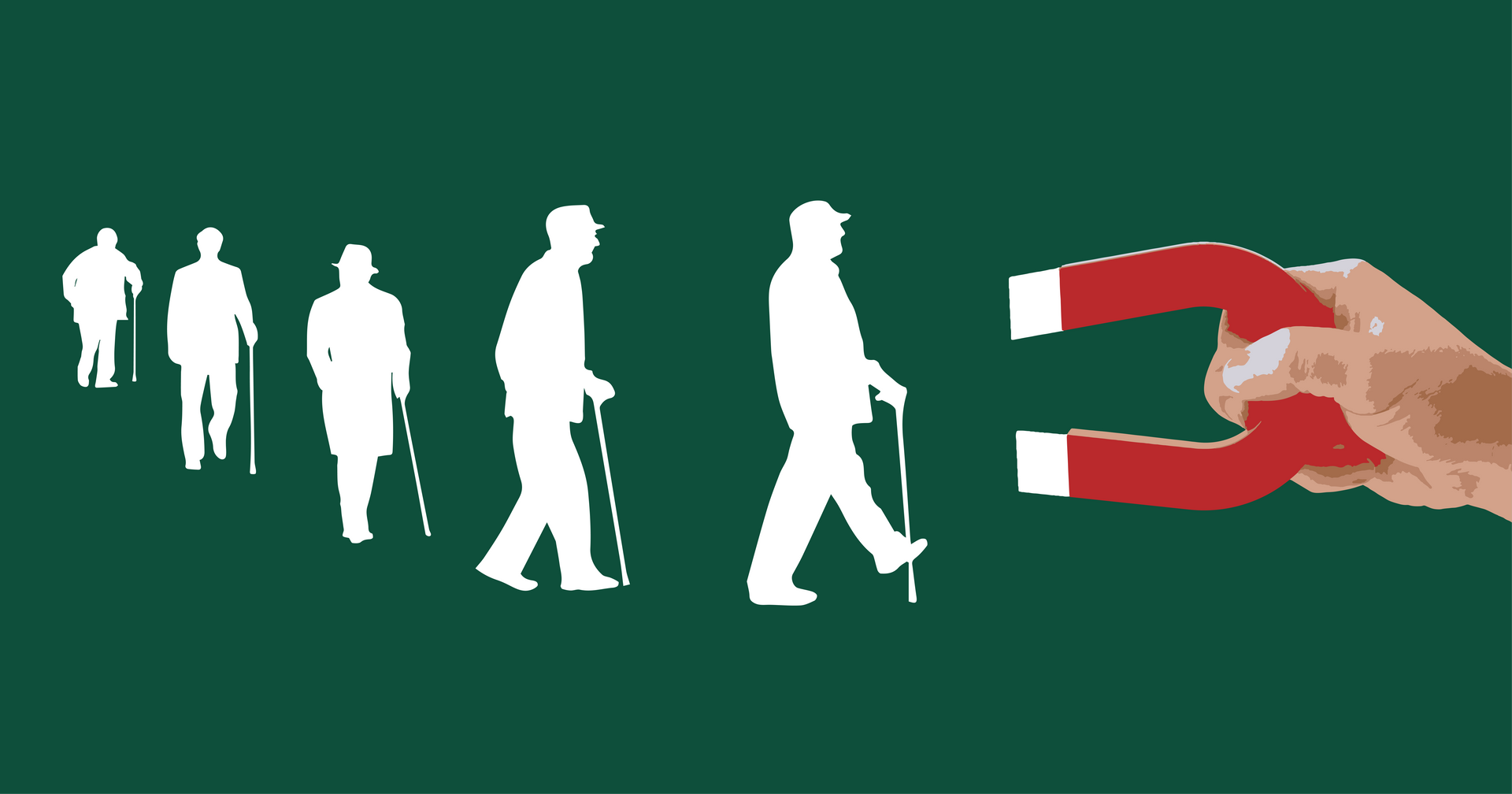How to Market Your Senior Housing Community to Potential Residents?

Attracting new residents to your senior housing community is essential for its long-term success. With a growing number of seniors looking for housing options that meet their unique needs, there is a large and growing market for your community as per estimates more than 20% of the population will be Senior Citizens in the United States. This is a very sharp increase, as in 2017 it was just 17%. So, take a deep breath, and let us be your guide on this important journey.
1. Understand your target market
Who are you trying to reach? What are their needs and wants? What are their concerns? Once you understand your target market, you can tailor your marketing messages accordingly. Also, you can identify your ideal residents by considering factors such as age, income, health, lifestyle preferences, and location.
2. Highlight your unique selling proposition (USP)
What makes your senior housing community different from the others? What are your strengths and advantages? Once you know your USP, you can communicate it clearly in your marketing materials. Let’s figure out a few examples of it:
- Location: How does your community's location outshine senior communities within a 5-20 mile radius?
- Amenities: Does your community offer a wide range of amenities, such as a fitness center, pool, library, and social activities?
- Care levels: Does your community offer a variety of care levels, from independent living to assisted living to skilled nursing care?
- Price: Is your community competitively priced?
- Reputation: Does your community have a good reputation? Are your residents and their families happy with the care and services that you provide? Does your Google My Business reflect the sentiment?
- Services: Does your community offer services such as transportation, meal delivery, and housekeeping?
- Specialization: Does your community specialize in a particular area, such as memory or dementia care?
You can also use your USP to differentiate yourself from the competition. For example, if there are several other senior housing communities in your area, you could focus on your community's unique amenities, services, or care levels. Here are some examples of specific USPs for senior housing communities:
- A senior housing community that is pet-friendly.
- A senior housing community that offers a variety of social activities and events.
- A senior housing community with a lounge that creates a vibrant and inclusive atmosphere making it the perfect place to call home.
- A senior housing community that fosters a sense of safety, security, and well-being.
3. Develop a Strong Online Presence
There are many different ways to reach potential residents, including online marketing, print advertising, and community events. Use a mix of channels to reach as many people as possible. Like you can create a user-friendly and informative blogs that highlights your community's features, amenities, and services. Utilize search engine optimization (SEO) techniques to ensure your blogs rank well in relevant searches.
Google My Business for Senior Communities
We all already know that Google dominates the search, map, and mobile phone landscape. Not only does Google regularly scan country records and ads for Google My Business profile without the property manager promotion - but it also has great functionality to show off your property. Those options have to be utilities.
- Utilize quality photos to convey a strong sense of community.
- Consider hiring a photographer for 3D-style images (usually around $150).
- Ensure your logo is in high resolution for clear visibility.
- Craft a compelling description within the character limit.
- Write service descriptions in a call-to-action style.
- List your top products in the Services section.
- Create product categories like 1 Bedroom, 2 Bedrooms, Senior Apartments + City Name, and Amenities.
- Use floor plans as products.
- Categorize 1-bedroom configurations under the 1 Bedroom category.
- Include pictures of amenities like the pool, lounge, and apartments (without prices) under Amenities.
- Include the date your property opened.
- Clearly state your business hours.
- Property managers should download the app and activate messaging on the profile.
- Messages can be connected to your vendor CRM.
- Activate SMS notifications for messages.
- Post on Google My Business three times a week, similar to Facebook.
- Utilize the event post option for open house events (even if they don't exist) to create engagement.
- Include a separate link for booking appointments, directing users to your schedule page or contact information.
- Use UTM tags at the end of URLs to track traffic from Google My Business separately.
- The property name should ideally be the brand name with additional text indicating it's for Senior Apartments at most.
- Verification is mandatory for credibility.
4. Website
Your website is a must for effectively marketing your senior housing community to potential residents. Start by making it easy to navigate so visitors can quickly find the necessary information. Use clear and concise headings, and make sure your website is mobile-friendly. Use professional photos and consider adding and virtual tours to give visitors an immersive look at your community. Highlight your amenities and common areas, and show off the different types of apartments or rooms you offer. Make it easy for visitors to contact you and inquire about availability or schedule tours. Include a contact form on every page, and make sure your phone number is prominently displayed.
Highlight information about affordable programs or assistance options. This can be a significant selling point for potential residents. Ensure that your phone number is easily visible on every page. Visitors should be able to call you with just a few clicks, no matter where they are on your website. Include links to your social media profiles. This is a great way to showcase pictures of past events and foster a sense of community.
5. 3rd Party Listings
Nowadays, Apartment.com dominates the top results on Google search pages for senior housing. Other popular third-party listing sites include Zillow, Trulia, Rent.com, and ApartmentList. If you're unsure where to start, list your facility on all of the major third-party apartment listing sites, with Apartment.com being a top priority. You can also check to see if your vendor CRM for your senior property offers integration options for third-party listings. This can make it easier to ensure that your availability is always up-to-date on these platforms.
To gauge the most effective option for your area, simply perform a quick Google search using keywords like "senior apartments + city." The provider that ranks first in the search results is likely to be your area's most popular third-party listing site.
6. Bing Place is a must
People often need to pay more attention to the value of Bing maps. Remember that Microsoft dominates the desktops in the world. They connect Windows with Bing Search and Bing Maps. Edge browser is commonly used, especially by older folks. Edge is running on Chrome technology, and Microsoft subscribes from Google and accepts that Edge is an improved version of Chrome.
Bing Places can sync all your settings from Google My Business with one click.
- Log in to BingPlace.com with your Gmail account for Google my Business
- Sync with Ensure you chose the correct category.
- Pictures will show up as thumbnails and can look distorted, but no worries the actual pictures most of the time show up. However, check if they do.
Rank on Google and Bing’s search page
Create and share valuable content, such as blog posts, videos, and infographics that address common concerns and interests of seniors and their families. Offer resources like guides on senior living options, financial planning for retirement, and healthcare tips. Your marketing materials should be well-written, informative, and visually appealing. Use high-quality photos and videos to showcase your community. Share resident testimonials and success stories to build trust, if these can be in the form of video, it is much better.
7. Make it easy for people to contact you
Include your contact information prominently on all of your marketing materials. Make it easy for people to learn more about your community and schedule a tour. There are a number of ways to make it easy for people to contact you, the first one is explained above in the Website Paragraph. You can also provide a link to your email address on your website so that people can easily contact you via email. When people contact you, be sure to respond to their inquiries promptly. This shows that you value their time and business. If you cannot answer their question immediately, let them know when you can reply.
However, with so many senior housing communities to choose from, it is important to market your community effectively to stand out from the competition. By understanding your target market, highlighting your unique selling proposition, and using a variety of marketing channels, you can reach potential residents and attract new residents to your community.
Some other points which can be valuable for reaching your potential residents:
- Resident Testimonials and Stories: Incorporate quotes or stories from residents sharing their positive experiences in your community. For instance, highlight a resident who improved their quality of life by engaging in community activities or by benefiting from specialized care services.
- Community Engagement and Partnerships: Discuss collaborations with local businesses like arranging regular visits from nearby stores for residents’ shopping needs. Highlight partnerships with healthcare providers for on-site health checkups or specialized care services.
- Digital Marketing Strategies: Provide examples of successful social media campaigns targeting seniors, such as interactive posts that engage the audience or email newsletters offering valuable information about community events.
- Virtual Tours and Interactive Elements: Showcase a virtual tour of the community on the website, allowing prospective residents to explore common areas, apartment layouts, and amenities virtually.
- Cultural and Lifestyle Programming: Highlight cultural events held within the community, such as diverse cuisine nights or celebrations of various holidays. Discuss how religious services or interest-based clubs contribute to residents’ sense of belonging.
- Safety and Healthcare Features: Detail the community’s 24/7 emergency response system or partnerships with local medical professionals for regular health check-ups and wellness programs.
- Sustainability and Eco-Friendly Practices: Explain eco-friendly initiatives like recycling programs, energy-efficient appliances, or community gardens, emphasizing the community's commitment to sustainable living.
- Feedback and Continuous Improvement: Share how feedback from residents resulted in improvements, like adding new fitness equipment based on residents’ requests or implementing suggestions for community events.
- Financial Planning Assistance: Provide resources or workshops offered to assist residents in understanding retirement funds, insurance options, or financial aid programs available to them.
- Detailed Information on Different Living Options: Explain the distinct features of each living option, such as the level of independence in independent living, personalized care in assisted living, and specialized services in memory care.
- Transportation and Accessibility: Outline the transportation services provided, like scheduled shuttles to shopping centers or medical facilities. Highlight the community's proximity to essential services for easy access.
- Personalization of Living Spaces: Describe how residents can customize their living spaces, whether through decorating options, flexible layouts, or personal touches encouraged by the community.
- Multi-Channel Marketing Approach: Provide examples of successful traditional and digital marketing efforts, such as hosting open house events, leveraging social media campaigns, and collaborating with local media for coverage.
- Innovative Programs and Amenities: Showcase unique programs, like art therapy classes, tech-savvy workshops, or innovative wellness initiatives that set your community apart from others.
Conclusion
In short, there's a great opportunity to attract new residents by understanding their needs and effectively marketing your senior housing community's unique strengths. By implementing the strategies outlined above, such as creating a strong online presence, leveraging resident testimonials, and highlighting your unique selling proposition, you can effectively reach potential residents and create a thriving senior housing community. Remember to focus on resident well-being, community engagement, and offering a variety of lifestyle options to truly make your community stand out.




